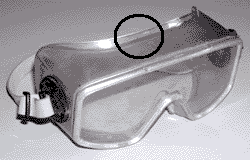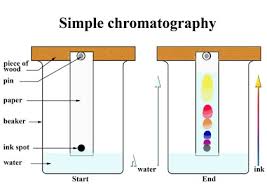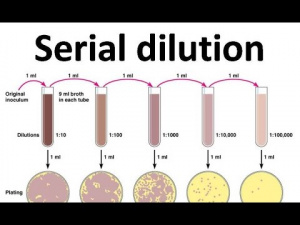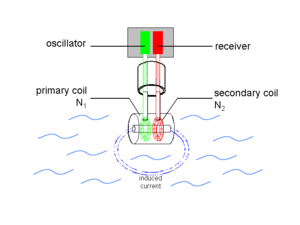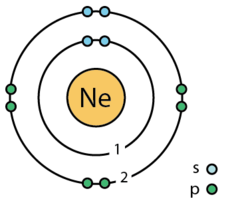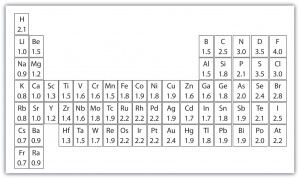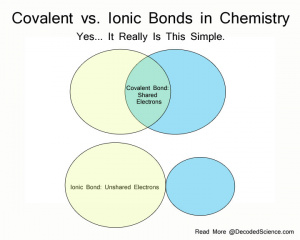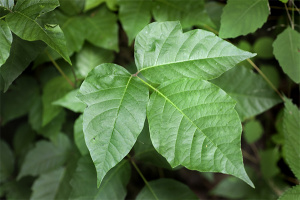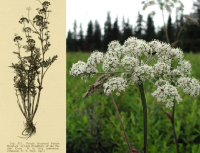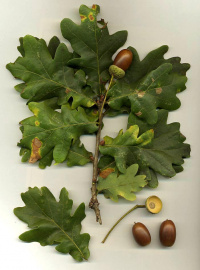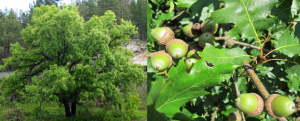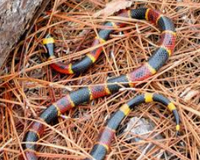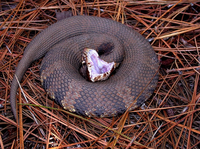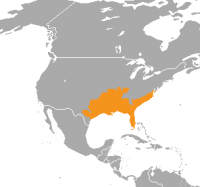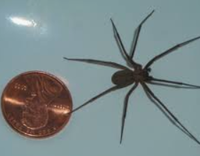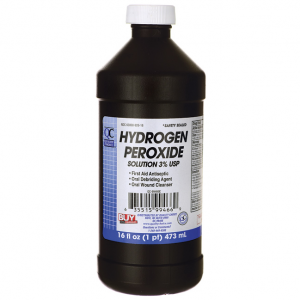Potions and Poisons
| Potions and Poisons | |||||||
|---|---|---|---|---|---|---|---|
| Type | Chemistry | ||||||
| Category | Lab | ||||||
| Latest Appearance | 2019 | ||||||
| Forum Threads | |||||||
| |||||||
| Question Marathon Threads | |||||||
| |||||||
| Division B Results | |||||||
| |||||||
Potions and Poisons was a Division B event for the 2018 and the 2019 season. It was previously a trial event in Pennsylvania, Washington, and the 2016 National Tournament. In Potions and Poisons, participants demonstrate their knowledge on specified substances', and chemical properties and effects with a focus on common toxins and poisons. Category C goggles are required in this event along with covering of skin from the neck down. An apron/lab coat is commonly used.
Topics covered
Event topics from the 2019 season rules include:
- Ionic/Covalent bonds with relation to conductivity
- Mixtures, solutions and compounds and separation of the components within them
- Chemical and physical properties and changes
- Balancing chemical equations
- Dilution's effect on toxicity
- Toxic spills and effects of their spread via water, wind, or gravity
- Identification of various poisonous organisms along with their toxic effects (listed on the rules)
- Effects/chemistry of common household toxins and chemicals
Lab Tasks
Lab tasks from the 2019 season rules include:
Chromatography
Chromatography is when a mixture (i.e. markers, pens, organic juices) is separated by passing it through a solution, which will most likely be water. There are many different types of chromatography such as gas or column chromatography, but in the lab task, simple chromatography is the most important.
To start, draw a start line and the ink spot on the chromatography paper. The start line should be above or near the water line, ~2-3 cm from the bottom of the paper for accurate results. Then, attach the paper to a stick or lean it against a stick in the beaker. The solution (water) should travel up the paper and separate the sample into different colors. After roughly 10-20 minutes depending on the paper, the chromatography should be done and the paper should be taken out to dry. After that, mark the water line's endpoint and where the colors ended. It is important to distinguish the number of colors that are there and use the retention factor for each color. To find the distance, put dots at the highest point of each color and measure it.
The retention/retardation factor (RF) is the distance moved by the compound divided by the distance moved by the solute. In other words, divide the distance between the color and the start over the distance the water traveled.
Mixtures of Reagents
Reagents are basically the starting materials used in chemical reactions. They're used to test if a reaction would occur. This type of lab is rare, but it can occur here and there.
These types of labs depend solely on the situation and doesn't have a set procedure like the other labs. On the test, it should describe the exacts about the lab and what to do.
Separation of Mixtures
This type of lab, like the previous example, depends solely on the situation. These mixtures are reversible, and the most important thing is determining the proper separation method to use.
Here is a list of different separation methods:
- Filtration - separating an insoluble solid from a liquid using a filter
- Chromatography - identify chemicals (coloring agents) in foods or inks through polarity
- Evaporation - separating a solution of a solute and a solvent by evaporating the liquid
- Simple Distillation - separating a liquid from a solution and saving it
- Fractional distillation - separating a solution of two miscible liquids
- Magnetism - separating mixtures with one part having magnetic properties
- Separating funnel - immiscible liquids can be separated using their density. This process uses a funnel-like device
- Centrifuging - fast spinning machine that can separate solids from liquids
- Crystallization - separating solids by making them crystallize
- Sedimentation - separating solids from liquid by letting it settle
- Precipitation - creating a solid from a solution
- Sieving - using particle size to separate mixtures by using a sieve
- Decantation - separating liquids or homogenous mixture by letting one part settle and pouring the liquid out.
- Leaching - extracting a solid by dissolving it in liquid
- Winnowing - separating lighter solids from heavier ones use wind.
Dilution
Dilution is simply the addition of a solvent without adding any solute. This is shown in the equation:
[math]\displaystyle{ C_1 \times V_1 = C_2 \times V_2 }[/math]
where
- C1 = the initial concentration of the solute
- V1 = the initial volume of the solution
- C2 = the final concentration of the solute
- V2 = the final volume of the solution
For example, if a solution has a 10% concentration of salt in one liter of water, adding another liter of water would halve the concentration of the salt, to 5%. This example can be shown mathematically using the above equation, where:
- C1 = 10%
- V1 = 1 L
- C2 = 5%
- V2 = 2 L
[math]\displaystyle{ 10\% \times 1 L = 5\% \times 2L }[/math]
[math]\displaystyle{ 0.1 \times 1 L = 0.05 \times 2L }[/math]
[math]\displaystyle{ 0.1 L = 0.1 L }[/math]
For example: when told to make a sample with a 1:1440 dilution factor, take the solution and dilute it by 12, 12, and 10 respectively (12 * 12 * 10 = 1440) to get to that certain dilution.
pH determination
pH is the potential of hydrogen, which basically is a number that decides how strong of a base or acid a solution is. The range of pH in water is 0-14, however, with other substances, it can go well below 0 or well above 14. In this event, the 1-14 scale will likely be used. 0-6 pH is acidic, 7 is neutral, and 8-14 are bases.
To test the pH, litmus or pH paper are typically used. There are many ways of doing this, but the one that's most efficient is just dipping the paper in the water (about 10% of the paper should be submerged) and taking it out to dry on a spot plate. Then, match the color of the paper to the color on the litmus paper box/holder. If the paper just looks wet, it is neutral. Litmus/pH paper does not work with heavily dyed or dark colored liquids.
In pH, every number down (relative to water's scale) is 10 times stronger than the previous number. (I.e pH 3 is 10x stronger than pH 4; pH 4 is 100x stronger than pH 6; pH 6 is .01x stronger than pH 4)
Conductivity
Conductivity tests are performed with a conductivity meter, which can either be bought or made. Cheaper conductivity meters typically use LEDs to indicate the conductivity of a liquid, where a dimmer LED means the liquid is less conductive and a brighter LED means that it is more conductive. While these types of meters are cheaper, they typically require more work as they do not display a number for the conductivity. Electronic conductivity meters are typically more expensive, but display a number as opposed to just turning on a LED. Not all conductivity meters are the same, and it is important to read the manual that comes with it to know how it works. Avoid getting liquids anywhere but the probes, and be sure to wipe off the meter after use.
Ionic bonds are conductive, while covalent bonds are not. If a compound has a lot of ionic bonds, it will be more highly conductive than a substance that does not.
Lab Equipment
For current information, always check soinc.org.
Competitors may bring a kit of lab equipment as specified on the Recommended Lab Equipment list for the current season. The 2019 list may be found here, providing an idea of the equipment required for this event. While not all of the items listed may be used during the event, it is better to err on the side of caution and be prepared for anything. If equipment is required but a competitor did not bring it to the event, it is unlikely that an event supervisor will be able to provide it. Notable equipment for this event includes Erlenmeyer flasks, graduated cylinders, test tubes, beakers, spot plates, pteri dishes, and testing materials such as pH paper and conductivity meters. Some tools for handling chemicals may also be required, such as tweezers, spatulas, and stir rods.
The Atom
Atoms are the particles that make up elements. This means that atoms come together to make everything on Earth, regardless of what it is or where it came from. The particles that make up these atoms (called subatomic particles) determine their properties, such as how reactive they are.
Subatomic Particles
Atoms are made of three particles: protons, electrons, and neutrons.
Protons are found in the center of the atom, known as the nucleus. The number of protons in the nucleus of an atom is the same as its atomic number, and determines what element it is. No two elements will have the same amount of protons, and as a result will not have the same atomic number. Protons are also positively charged and weigh the most out of these three particles.
Neutrons are also found in the center of the atom, though they have no electric charge. Their mass is slightly larger than that of a proton, though the mass of each particle is commonly referred to as an atomic mass unit. The atomic mass of an element is found by adding together the amount of protons and neutrons in the nucleus. While the amount of protons determines the identity of an element, the number of protons may change. These variations of an element are known as isotopes, and are identified by their atomic mass. For example - carbon-12 has six protons and six neutrons in its nucleus which gives it an atomic mass of 12. This isotope makes up a majority of elemental carbon found on Earth, but other isotopes such as carbon-13 and carbon-14 also occur naturally.
Electrons are the smallest of these three particles, orbiting around the nucleus instead of being a part of it. Electrons are negatively charged, and play a major role in how elements interact.
Shells, Subshells, and Orbitals
There are a variety of different models that explain how an atom is structured. The Rutherford-Bohr (or simply Bohr) model of the atom is one of the simplest and most common - in it, the atom is depicted as a central nucleus with electrons in layers known as shells at different distances from the nucleus. These shells have different energy levels, with the one closest to the nucleus having the lowest energy level. The first shell only holds two electrons, the second shell holds eight, the third shell holds 18, and so on. A general rule of thumb is that each successive shell can hold [math]\displaystyle{ 2*n^2 }[/math] electrons where n is the shell's number. The outermost shell of an atom is known as the valence shell, and its electrons are known as valence electrons. In the Bohr model of a neon atom pictured to the right, all eight electrons in the second shell are valence electrons. Atoms tend to gravitate towards being very stable, having as many full shells as possible. If an atom is missing one electron in its outermost (valence) shell, it will be easier for it to bond to an element with one valence electron. Conversely, if an atom only has one valence electron it will be more willing to "give it away" or bond with an atom that needs one more electron to fill its valence shell. While for many elements the outermost shell can hold more than eight electrons, oftentimes elements bond in a way that results in each atom having eight electrons in its outermost shell. This is known as the octet rule.
While the Bohr model is useful in explaining the energy levels and reactivity of certain elements, it leaves a lot to be desired when explaining how electrons move around the nucleus. Many electrons do not circle the nucleus at all, instead filling up spaces known as orbitals. Electrons are very small and move very quickly, and as a result it is difficult to determine where an electron is at a given point in time. However, these orbitals are where an electron spends a majority of its time. While the Bohr model simplifies the placement of electrons in space, it can be expanded upon in order to paint a better picture of how electrons move and interact with other particles. Electron shells as described above can be broken down into subshells, which are just sets of one or more orbitals. These subshells are known as s, p, d, and f. Subshells are filled in that order, starting with s and moving up through p. The s subshell holds 2 electrons, the p subshell holds 6, the d subshell holds 10, and the f subshell holds 14 electrons.
Electron Configuration
The electron configuration of an atom has to do with subshells and orbitals, listing out where the electrons of an atom are likely to be located. For example, the electron configuration of neon is [math]\displaystyle{ 1s^2 2s^2 2p^6 }[/math]. The large number is the shell the electron is located in, the letter is the subshell it is located in, and the superscript describes how many electrons are in the subshell.
Looking again at the Bohr model of neon, it has two electrons in the first shell and eight in the second. Because electrons fill the smaller subshells first, this means that the first shell can be written as [math]\displaystyle{ 1s^2 }[/math]. Each shell is filled in the same way. Because the s subshell can hold two electrons and the p subshell can hold six, the second shell can be written as [math]\displaystyle{ 2s^2 2p^6 }[/math]. Putting the two shells together gives the complete electron configuration of neon which is [math]\displaystyle{ 1s^2 2s^2 2p^6 }[/math].
The Periodic Table
For additional information about the periodic table, please see Chemistry Lab/Periodicity.
Intramolecular bonding
A chemical bond is an attraction between two atoms that causes them to bond together, which can create molecules. The two types of bonding that the current version of the Potions and Poisons rules says to know are ionic and covalent bonding. Bonding occurs with electrons, in which the electrons are taken (ionic) or shared between atoms (covalent).
Electronegativity
Electronegativity is a property of elements that is defined as the tendency of an atom to attract electrons. The difference between two atoms' electronegativities decides the type of bond they make. A chart known as an electronegativity chart can be used to find the electronegativities of different elements. Electronegativity increases from left to right and from bottom to top, therefore helium has the highest while francium has the lowest.
Ionic Bonding
Ionic bonding is a type of bonding in which one atom takes an electron from another atom. This type of bonding occurs when the difference in electronegativity is high. A common example of this is the compound NaCl, or table salt. The metal Na (sodium) bonds with the halogen gas Cl (chlorine). When solid, ionic bonds are typically not conductive. However, when liquid, it is conductive.
Ionic bonds are typically formed with a crystal lattice structure and have a high melting temperature. They're also water soluble.
To name a simple ionic compound, use the name of the regular metal, followed by the name of the nonmetal, with the latter using the ending "-ide". For example, NaCl would be written as sodium chloride.
Covalent Bonding
Covalent bonding is a type of bonding in which atoms 'share' electrons. This occurs when there is a low difference in electronegativity. Two very common examples are the molecules H2 and O2. Because the bonds are formed between two atoms of the same element, the difference in their electronegativities must be zero. Covalent bonds are liquids and gases, however, they are not conductive.
Covalent bonds are formed with a true molecule structure and has a low melting temperature. They are not water soluble (most of the time) and are odorous.
Covalent bonds can be nonpolar or polar. In polar covalent bonds, the atoms have different electronegativities, and therefore share electrons unequally. The more electronegative atom has a partial negative charge, while the less electronegative atom has a partial positive charge. In nonpolar covalent bonds, the atoms have similar electronegativities and therefore share the electrons equally. These are denoted with the δ symbol (Greek lowercase delta), using δ- for partial negative charge and δ+ for partial positive charge.
To summarize, polar covalent bonds share electrons unequally and therefore have poles. Nonpolar covalent bonds share electrons equally, and therefore do not have poles.
Intermolecular Forces and Dipoles
Intermolecular forces (IMF) are interactions between atoms or molecules that do not result from electronic bonds. They are comparatively very weak, but still play an important part in all forms of chemistry. The three main forms are London dispersion forces, dipole-dipole forces, and hydrogen bonds. All of these intermolecular forces can be referred to as van der Waals forces.
When discussing intermolecular forces, the word dipole appears a lot. A dipole movement is a measurement of the separation of charges on a molecule. This quantity is written as a vector, since it has both direction and magnitude. Permanent dipoles occur due to covalent bonds as a result of electronegativity. These dipole movements are what separate polar and nonpolar molecules. Polar molecules will have positive and negative areas referred to as [math]\displaystyle{ \delta^+ }[/math] and [math]\displaystyle{ \delta^- }[/math]. Instantaneous dipoles occur in all molecules due to the movement of electrons. Since electrons are constantly moving, one part of an electron will always be more negatively charged. These instantaneous dipoles can attract each other, resulting in weak intermolecular forces.
London Dispersion
London dispersion forces can also be referred to as instantaneous dipole–induced dipole forces, and are exhibited by all molecules. These forces come from interactions between uncharged atoms and molecules, and are the weakest types of intermolecular forces.
Dipole-Dipole
Also known as Keesom forces, dipole-dipole interactions only occur in polar molecules. These forces occur when the [math]\displaystyle{ \delta^+ }[/math] area of a polar molecule is attracted to the [math]\displaystyle{ \delta^- }[/math] area of another polar molecule.
Hydrogen Bonding
The strongest of the three types of IMFs, hydrogen bonds occur when a hydrogen atom is attracted to a strongly electronegative atom such as nitrogen, fluorine, or oxygen.
Mixtures, Solutions, and Compounds/Molecules
Mixtures
Mixtures are substances that are made by combining 2 or more mixtures. There are two types, homogenous and heterogenous. Homogenous mixtures are substances that have a uniform mixture throughout the substance. Some examples are lemonade, salt water, and air. Heterogenous mixtures are substances that have inconsistent component ratios throughout the whole. Basically, it's just not mixed very well. Some examples are trail mix, salad, and sand and pebbles.
Solutions
Solutions are a type of mixture that requires a solute, a solid, and a solvent, a liquid. This type of mixture is often referred to as a homogenous mixture since the mixture is consistent throughout.
Compounds/Molecules
Compounds are molecules that have two or more different elements that are chemically conjoined together. H2O, CO2, and H2O2 are all types of compounds. O2 and He2 are not. Molecules are just a group of elements that are chemically conjoined.
Types of Changes
Physical Changes
Physical changes affect the appearance of a substance, not the chemical composition. Physical changes could be used to separate components of a mixture into their own individual parts. Examples of physical changes include tearing paper, boiling water, mixing sand and water, and melting an ice cube.
Chemical Changes
Chemical changes are the altering of a substance to form a new substance with a different chemical equation. Examples include burning a candle, digesting food, and rusting iron.
Types of Reactions
Synthesis and Combustion
A synthesis reaction is one of the simplest chemical reactions, occurring between either pure elements or compounds. Synthesis can also be referred to as combination, so pay attention to the wording on test questions. An example of synthesis is the formation of sodium chloride (table salt) using sodium metal and chlorine gas:
[math]\displaystyle{ 2Na + Cl2 \rightarrow 2NaCl }[/math]
However, not all synthesis reactions are this simple. While a majority of the time synthesis equations will only have one product, that is not always the case. Take the following equation for photosynthesis. The carbon dioxide and water are forming the more complex glucose, while the oxygen is left over.
[math]\displaystyle{ CO_2 + H_2O \rightarrow C_6H_12O_6 + O_2 }[/math]
One specific type of synthesis is also known as combustion, and it takes place when a hydrocarbon reacts with oxygen. The product will always be carbon dioxide and water. For example:
[math]\displaystyle{ C_6H_{12} + 9O_2 \rightarrow 6CO_2 + 6H_2O }[/math]
Decomposition
Just as two components can be combined to form a single product, one product can be broken down to form its individual components. This is referred to as decomposition. It will always have one reactant and multiple products. In this example, hydrogen peroxide breaks down to form water and oxygen.
[math]\displaystyle{ 2H_2O_2 \rightarrow 2H_2O + O_2 }[/math]
Single Displacement
Single displacement (also known as single replacement) is a type of reaction that occurs between one pure element and one compound. Generically, it can be written as [math]\displaystyle{ A + BC \rightarrow AC + B }[/math] For example, when putting magnesium into hydrochloric acid the following reaction will occur:
[math]\displaystyle{ Mg + 2HCl \rightarrow MgCl_2 + H_2 }[/math]
Typically, single displacement occurs when A is more reactive than B, the element it is replacing. However, not all elements can replace each other. In order for a single displacement reaction to work, A and B have to either be different metals or halogens. The one exception to this rule as hydrogen, as seen in the equation above. If A and B are different metals then C must be a cation, or an ion with a positive charge. If they are halogens then C must be an anion, or an ion with a negative charge.
Elements will always replace each other in a specific order, known as a reactivity or activity series. An element on the list can replace all elements below it, but not ones above.
Activity Series
|
Double Displacement
Double displacement (also known as a metathesis reaction or double replacement) is very similar to single displacement, but it occurs between two compounds instead of between one compound and one pure element. Typically these reactions occur in a solution, and either form an insoluble solid known as a precipitate or water. Take the following equation with potassium chloride and silver nitrate:
[math]\displaystyle{ KCl + AgNO_3 \rightarrow AgCl + KNO_3 }[/math]
Both of the reactants are aqueous, as well as one of the products (potassium nitrate). However, the silver chloride is a solid. Since the solid formed here is called a precipitate, this type of reaction is known as a precipitation reaction.
Another type of double displacement reaction is known as a neutralization or acid-base reaction. Water is typically a product of these reactions, since the goal of a neutralization is to form products that are not acidic or basic.
[math]\displaystyle{ H_2SO_4 + 2NaOH \rightarrow Na_2SO_4 + 2H_2O }[/math]
In the previous equation, the acid ([math]\displaystyle{ H_2SO_4 }[/math]) reacts with the base ([math]\displaystyle{ NaOH }[/math]) to form water and sodium sulfate.
Chemical Equations
Chemical reactions are written out as chemical equations. A chemical equation has two parts: reactants and products. The atoms in the reactants are rearranged to form the products.
Chemical equations are written left-to-right with the products following the reactants, and an arrow sign (which is read as "yields") pointing from the reactants to the products. Each individual reactant/molecule is represented with a plus sign (+). The following equation is an example of a chemical equation, with the reactants on the left and the product on the right.
[math]\displaystyle{ 2H_2 + O_2 \rightarrow 2H_2O }[/math]
If there are multiple instances of a molecule, the number of molecules is written as a coefficient. For example, the product in the above equation is water or H₂O. There are two water molecules present, which is written as 2H₂O.
Balancing Chemical Equations
In a chemical reaction, the quantity of each element cannot change (If there are n atoms of element A in the reactants, there must be n atoms in the product). A chemical equation must have equal quantities of each element on either side of the arrow. As mentioned above, adding coefficients to molecules can show that there are those many molecules present. However, if an equation is given without coefficients, chances are that there is inequality on either side. Consider the example given above; however this time it is without coefficients:
[math]\displaystyle{ H_2 + O_2 \rightarrow H_2O }[/math]
Counting the number of each element on either side of the equation gives the following amounts:
- Hydrogen on left: 2
- Oxygen on left: 2
- Hydrogen on right: 2
- Oxygen on right: 1
This cannot be a balanced equation, because the number of atoms is unequal. To fix this issue, it is necessary to balance the chemical equation.
To balance a chemical equation, add coefficients to make the number of atoms of each element equal. For example, take again the previous equation:
[math]\displaystyle{ H_2 + O_2 \rightarrow H_2O }[/math]
Notice that there is only one type of molecule as the product, meaning that it is the only molecule that a coefficient can be added to. A basic way to find the proper coefficient is to find a ratio between the two elements on one side and apply that to the other side. In this example, there are two times as many hydrogens as oxygens. In addition, all coefficients must be whole numbers. Therefore, the lowest coefficients would be a two in front of the hydrogen gas (on the left) and a two in front of the water. This gives us a balanced equation of:
[math]\displaystyle{ 2H_2 + O_2 \rightarrow 2H_2O }[/math]
An easy way to go about this is to guess and check the distinct elements first. For example:
[math]\displaystyle{ C_3H_8 + O_2 \rightarrow CO_2 + H_2O }[/math]
Start with C, as it's only present in two compounds that don't involve O (which is involved in 3). If putting 3 at CO2 doesn't work, double it.
When the answer to the blank is 1, it should be left blank. Only fill in an answer if it is greater than one. When the equation is already balanced, just write "balanced".
Poisonous Plants and Animals
The poisonous plants and animals listed in the 2019 rules are:
- Poison ivy (Toxicodendron radicans)
- Western Water Hemlock (Cicuta douglasii)
- Autumn Skullcap (Galerina marginata)
- Henbane (Hyoscyamus niger)
- Oak (Quercus sp)
- Timber Rattlesnake (Crotalus horridus)
- Eastern Coral Snake (Micrurus Fulvius)
- Cotton Mouth Snake (Agkistrodon piscivorus)
- Black Widow Spider (Latrodectus mactans)
- Brown Recluse Spider (Locosceles recluse)
What is included is a general description of the organism, the poisonous effects, and a brief description of the poison itself. However, further research is encouraged.
Poison Ivy (Toxicodendron radicans)
Poison ivy grows most regions of the US, typically in woods, fields, and along roadsides, especially where vegetation is disturbed. It can be identified by its three thin, pointy, and shiny leaves. The leaf color depends on the season. In the spring, the leaves are reddish; in the summer, green; in the fall, orange to bronze.
Upon contact with the oil from poison ivy, an allergic reaction happens. Touching the plant itself is not the only way to contact the oil; touching gardening equipment or pets that have contacted the ivy can also spread the oil. Symptoms of a reaction include itching, redness, swelling, and blisters. It is important to note that the blisters are NOT contagious.
The poison, Urushiol, is an oily mixture of organic compounds with allergenic properties. It can also be found in mango trees, lacquer trees, and other Anacardiaceae plants. It gets its name from the Japanese word for the lacquer tree, urushi. The urushiol allows the tree to form a hard lacquer which is used in Asian lacquerware. It's a pale yellow liquid which has a boiling point of 200C. It can easily be removed with soap and water, provided that the skin hasn't absorbed it yet.
Western Water Hemlock (Cicuta douglasii)
Toxin/Mechanism- The toxin, cicutoxin and oenanthotoxin, are conjugated polyacetylenes. These unsaturated alcohols have a strong carrot-like odor and are noncompetitive antagonists for the gamma-aminocutyric acid (GABA) neural transmitter in the central nervous system. GABA role is to inhibit neuron excitability; essentially it has a relaxing function. Blocking this results in convulsing and grand mal seizures and eventually death can occur.
Symptoms/Conditions- Symptoms of toxicity are most often due to digestion of this plant and consist primarily of seizures, but other features include: nausea, diarrhea, tachycardia, mydriasis (dilation of the eyes), rhabdomyolysis (break down of muscle tissue that releases a protein into the blood), renal failure, coma, and respiratory impairment. Prognosis is dependent on responsive care.
Characteristics/Identification- Water hemlock is a meadow flower (up to 1 m high) in the carrot family with a distinctive white flower cluster that grows in an umbrella shape. Side veins lead to notches at the outer margin and it has a thick rootstalk with a number of small chambers that hold the poisonous liquid. The toxin is primarily found in the tubers and green seed heads, but leaves and stems contain cicutoxin in their early growth.
Region/Habitat- North America and Europe, found in wet seepage areas of meadows, pastures, and in streams.
Autumn Skullcap (Galerina marginata)
Toxin - amatoxin γ-amanitin(C39H54N10O13S), β-amanitin(C39H53N9O15S), α-amanitin (C39H54N10O14S)
Initial symptoms after ingestion - severe abdominal pain, vomiting, and diarrhea may last for six-nine hours. toxins affect the liver, results in gastrointestinal bleeding, coma, kidney failure, or even death, within seven days of consumption
Characteristics - cap - 1.7 to 4 cm. has edges (margins) that are curved in. As the cap grows, it becomes broadly convex and then flattened. Pale to dark over the disc and ochraceous on the margin (when young), but fading to dull tan or darker when dry. Translucent when moist. Gills are typically narrow and crowded together, becomes darker over time. stem - 3 to 6 cm long, 3 to 9 mm thick. Initially solid, becomes hollow from the bottom up as it matures. Ring located on the upper half may be sloughed off and missing in older specimens. Color initially whitish or light brown, but appears darker in mature specimens.
Habitat - grow on or near the wood, typically in groups or small clusters, and appear in the summer to autumn. Northern Hemisphere, found in North America, Europe, Japan, Iran, continental Asia, and the Caucasus. also found in Australia.
Henbane (Hyoscyamus niger)
Toxic parts - leaves, seeds, and roots
Toxin - Atropine and scopolamine, found in leaves. Apoatropine and cuscohygrine main alkaloids of the root. The main alkaloid in seeds is hyoscyamine, little hyoscine and little atropine. Toxic to cattle, wild animals, fish, and birds. Pigs are immune.
Symptoms/conditions - hallucinations, dilated pupils, restlessness, fast heart, seizure, vomiting, high blood pressure, and ataxia. Initial effects last for 3-4 hours, aftereffects last up to three days. Side-effects - dry mouth, confusion, locomotor, memory loss, and far sight. Overdosages result in delirium, coma, respiratory paralysis, and death
Characteristics - An annual or biennial. Grows up to three feet tall. Leaves are lance-shaped to oblong. Hair on bottom margin. Veins are prominent. Seen in June–September, however, the annual form flowers are in July or August and the biennial are in May and June. Flowers are brownish-yellow, purple center and purple veins. Hundreds of tiny black seeds, 1.5 millimeters long, are in egg-shaped fruit. Annual plants are shorter and weaker, produce weaker, later seeds. Produce 25,300 ± 4,004 seeds
Habitat - Native to Europe and northern Africa. Distributed nearly all parts of the north hemisphere, Europe, Asia, North America, Brazil. Found on chalky ground and near the sea.
Oak (Quercus sp)
Toxic parts - Leaves, green acorns
Toxins - Tannic acid, which binds and precipitates proteins. Cattle, sheep, horses and goats are most affected while pigs are immune.
Symptoms/conditions - Anorexia, depression, constipation, diarrhea, blood in urine. Signs typically occur around 3-7 days after consumption, with
Characteristics - While the genus Quercus contains over 600 members, the type species is Quercus robur, or the English oak. The English oak is a member of the white oak section (section Quercus) of the Quercus genus, meaning that its leaves have rounded lobes as opposed to the pointed lobes of the red oak section (section Lobatae). Acorns are typically 1-6 cm long, and
Habitat - Native to a majority of the northern hemisphere, with North America containing the largest number of different species.
Timber Rattlesnake (Crotalus horridus)
Toxin - There are 4 types of toxin. Type A : A neurotoxin known as canebrake. Type B : A hemorrhagic and proteolytic toxin. Type A + B: Intergrade between snakes with Type A and Type B. Type C : relatively weak
Symptoms/conditions - Myokymia, defibrination syndrome, numbness, lightheadedness, weakness, vomiting, blurred vision, sweating, salivating. Can be treated with CroFab Antivenom.
Characteristics - Adults are usually between 3 to 6 feet long. Their upper surface is a pattern of dark brown or black crossbands. They can have irregular edges such as zig-zag or V-shaped. Some snakes will be complete black due to melanism. Rigid scales along with a rough-skinned appearance. Has a pit on each side of the face.
Life - Active from late April to mid-October. Sheds skin around every 1.4 years.
Habitat - Found in the eastern United States from southern Minnesota and New Hampshire and as far south as eastern Texas and northern Florida. While the timber rattlesnake could previously have been found in parts of Canada, it was declared locally extinct in 2001.
Eastern Coral Snake (Micrurus Fulvius)
Toxin - Phospholipase A2 and three-finger toxins (abbreviated as 3FTx). 3FTx proteins are neurotoxins, attacking nerve tissue. Phospholipase A2 can cause inflammation and pain at the site of the bite, though this is uncommon.
Symptoms/conditions - Slurred speech, double vision, muscle paralysis, can lead to cardiac arrest if left untreated
Characteristics - Typically between 20 to 30 inches long (50-76 cm). Eastern coral snakes have bands in a black, yellow and red pattern. The yellow bands are narrow, separating the wider black and red bands. The tail of the snake is only yellow and black, with no red. These bands surround the entire body as opposed to ending at the belly like on similar looking snakes. The head of an eastern coral snake is blunt, black from the tip to behind the eyes. Their fangs are short and cannot be retracted, so in order to deliver the venom the snake must chew on their prey.
Life - Spend a majority of their time underground, eastern coral snakes are nocturnal and often flee from predators. They are active during the spring and fall, and can live up to 7 years in captivity.
Habitat - Eastern coral snakes are native to the United States, being found in the southeastern part of the country. Eastern coral snakes can be found as far north as North Carolina, and their habitat extends all the way to the Florida panhandle. They can be found as far west as southern Georgia and some parts of eastern Louisiana.
Cotton Mouth Snake (Agkistrodon piscivorus)
Toxin - Cotton mouth toxins mainly consist of three protein families: phospholipase A2 (PLA2), metalloproteases (SVMP), and serine proteases (SVSP). PLA2s are responsible for inflammation and pain, while SVMPs are responsible for hemorrhage and SVSPs affect the coagulation of blood.
Symptoms/conditions - Low blood pressure, weakness, change in skin color at site of bite, trouble breathing, nausea, increase in heart rate
Characteristics - The cotton mouth snake (also known as the water moccasin) is a water snake that typically grow up to 35 inches in length (90 cm). However, some specimens have grown as long as 71 inches, or 180 cm. It is a pit viper, similar to copperheads and rattlesnakes. Cotton mouth snakes have a broad, triangular head with dark stripes near the eyes. Since the head is so broad, these snakes have a distinctive neck as opposed to most snakes which do not. While adult cotton mouth snakes do not have a distinctive pattern, juvenile snakes feature a pattern of dark bands against a lighter color. Juvenile snakes are tan or brown, while their pattern typically fades to solid black, brown, gray or olive color as the snake matures. The snake gets its name from its distinctive white mouth, which it shows off during threat displays. Cotton mouth snakes also have catlike vertical pupils, while other nonvenomous water snakes have round pupils.
Life - Cotton mouth snakes live in swamps, marshes, ponds, lakes, and streams. They can also be found basking on stones and logs near the water. They are active both during the day and at night, while they are typically more active at night than they are during the day. In the northern parts of their habitat, these snakes can hibernate during the winter. However, in the southern parts of their habitat they may not hibernate at all.
Habitat - Cotton mouth snakes can be found in the southeastern United States.
Black Widow Spider (Latrodectus mactans)
Toxin - Latrotoxins are the main component of the venom, but other compounds such as polypeptides, adenosine, and guanosine are active as well. Only the bite of the female is dangerous to humans, as their venom glands are very large.
Symptoms/conditions - Pain and sweating at the site of the bite, muscle cramps, headache, nausea, vomiting, weakness. Typically only localized pain is felt, but in some cases the pain can spread. Symptoms typically last from 3-7 days after the bite takes place.
Characteristics - Like all spiders, black widows have eight legs. Females are solid black with a red hourglass marking found on the abdomen. Males can be purple or similar to juveniles in color, where juveniles have white stripes and red-orange spots. The stripes are on the side of the abdomen, while the spots are in the center similar to the hourglass found on adult females. Adult females are typically 0.31-0.51 inches long (8-13 mm), while adult males are smaller at 0.12-0.24 inches (3-6 mm) long.
Life - Black widows live in dark, secluded places such as piles of wood or fallen branches. They can live for 1-3 years.
Habitat - Latrodectus mactans is a specific variety of black widow spider, native to the southeastern United States. This spider can be found as far north as Ohio, and as far west as Texas.
Brown Recluse Spider (Locosceles recluse)
Toxin - Brown recluse venom possesses potentially deadly hemotoxins and cytotoxins that affect the red blood cells and their ability to clot. It is a mixture of enzymes such as collagenase, protease, and phospholipase.
Symptoms/conditions - Symptoms include redness, fever, weakness, pain and nausea. In around 10% of victims necrosis can occur at the site of the bite, and in even fewer cases hemolysis (bursting of red blood cells) can occur.
Characteristics - Brown recluse spiders are typically around 6 and 20 mm long and brown in color (though some are lighter or darker). These spiders typically have markings on the thorax that resemble a violin, earning it the nickname fiddleback spider or violin spider. While most spiders have eight eyes, recluses such as the brown recluse and black widow have six eyes.
Life - Brown recluse spiders frequently live in dry and undisturbed places such as sheds, woodpiles, garages and cellars. They also tend to inhabit rotting tree bark, building irregular and asymmetrical webs. These spiders tend to live for one to two years.
Habitat - Brown recluse spiders live in the southeastern United States, trending as far north as southern Iowa and as far west as Nebraska and Texas.
Past Plants and Animals
Plants and animals that have been included in past years are listed below.
2017-2018
Poison Oak (Toxicodendron diversilobum) Poison oak, found throughout western North America in states like California and Washington, is also known as the Pacific poison oak or western poison oak. It can be found in a variety of habitats, ranging from grasslands to conifer forests. It can survive in shady to full sun conditions and prefers elevations below 5000 ft (1500 m). Its form can vary from a dense bush to a vine. During the winter, the stems are leafless; in February, the leaves begin to appear, changing colors from bronze to green to pink. The leaves most commonly have 3 lobes, are 1-4 inches long, and have lobed edges, resembling a very glossy oak leaf. Flowers are white, forming from March to June, and the peak flowering season is in May. Many deer and squirrels consume poison oak with no reactions to the toxin. The leaves and twigs contain urushiol, which causes itching and dermatitis. Burning this plant is very dangerous, as smoke can lead to internal injuries, along with external damage. Death-Cap Mushroom (Amanita phalloides) The death cap mushroom has a large fruiting body, typically 2-6 inches across, that is usually pale green or yellow. It has a distinctive swollen and ragged base (volva) which can be hidden by leaf debris. The scent is often described as overpoweringly sweet. It is widespread across Europe, often found with oaks, chestnuts, and pines. In the US, it can be found on both the East and West Coast. The death cap mushroom, one of the most dangerous mushrooms, is responsible for a large number of mushroom-related deaths each year. This is due to several factors; the death cap mushroom resembles edible fungi like the straw mushroom, and the toxins it contains (called amatoxins) cannot be reduced through cooking. Amatoxins cause renal and hepatic failure (kidney and liver), with symptoms including gastrointestinal distress, jaundice, and cardiac arrest. Treatment includes activated carbon to clear the GI tract and may require a liver transplant if liver failure occurs. Jimson Weed (Datura sp.) Jimson weed, believed to be native to Mexico, is a bush-forming herb with a bad smell. It has a long, thick root, and a branched yellow-green stem. The leaves are long and smooth, with the top side darker than the bottom. The flowers, occurring throughout the summer, are white to purple with a trumpet shape. The flowers generally open at night and have a pleasant smell. It is found throughout most moderate and warm climates, especially near wastelands and roadsides. Its name comes from Jamestown, Virginia, where it was consumed by soldiers during Bacon's rebellion. All parts of this plant contain anticholinergics (atropine, hyoscyamine, scopolamine), causing symptoms such as delirium and tachycardia. Traditionally, it was used for asthma and analgesia, as well as for hallucinogenic effects. Mayapple (Podophyllum peltatum) Mayapple is an herbaceous perennial that can be found throughout the eastern US and southeastern Canada. It grows in colonies that originate from a single root. The stems are generally 30-40 cm tall, with umbrella-like leaves with shallow lobes. The flowers can be white, yellow, or red, appearing in early May. The unripe green fruit is toxic, but the ripe yellow fruit with seeds removed can be safely ingested. However, even large amounts of the ripe fruit can still cause damage. The roots and leaves are poisonous as well. The toxin it contains is known as podophyllotoxin, which can be used topically to treat warts. In traditional medicine, Native Americans used mayapple as an antiemetic and anthelmintic. Ongaonga (Urtica ferox) Ongaonga, native to New Zealand, is a large woody shrub that can grow up to 3 meters tall. Stinging hairs up to 6 mm long cover the stems, leaves, and stalks. The leaves are oppositely arranged and have a triangular shape with serrated margins. It is often found in temperate regions on the edges of forests and flowers from November to March. It provides food and protection for the red admiral butterfly (Vanessa gonerilla) and is eaten by animals such as goats and deer. Ongaonga contains the toxin known as triffydin/tryfydin, which contains histamine, serotonin, and acetylcholine. Reactions range from inflammation to blurred vision and paralysis. One human death from ongaonga contact has been recorded. Cane Toad (Rhinella marina) Cane toads are native to South and Central America. They are night foragers and mainly prey on insects and snails. They have been introduced to various places such as Australia to control insect populations, but for the most part, become an invasive species. Adult cane toads have toxins on glands on their upper surface, especially near the shoulders, and exude bufotoxin, which acts on the heart and central nervous system (CNS), when provoked. Pacific Newt (Taricha sp. There are four species of Pacific newt: T. granulosa (rough-skinned newt), T. rivularis (red-skinned newt), T. sierrae (Sierra newt), and T. torosa (California newt). All four are found on the Pacific coast, from southern Alaska to southern California. These newts generally have a brown upper body with a brightly colored belly, with granulated or grainy skin. Adults are nocturnal and semi to fully aquatic, while efts (juveniles) are mainly terrestrial. Adults' diets generally consist of invertebrates. All species possess tetrodotoxin, with the rough-skinned newt being the most toxic. However, toxicity can vary, even between the same species living in different regions. Toxins should not come in contact with broken skin or mucous membranes, and hands should be washed after handling to prevent ingestion. Brown Recluse Spider (Loxosceles recluse) The brown recluse is one of three North American spiders with venom that requires medical attention. They are around 6-20 mm long and generally light to dark brown colored. These spiders generally have a marking shaped like a violin on their back, with the neck of the violin pointing towards the spider's rear. Unlike other spiders, which have 8 eyes, brown recluses have 6 eyes that are arranged in pairs. They have a coating of fine hairs that create a soft, furry appearance. Their life span lasts 1 to 5 years, and juveniles take about 1 year to reach maturity. Females lay eggs from May - July in sacs of 50, which hatch in one month. Brown recluses build irregular webs that are located in dry, undisturbed places like garages and cellars. Their diet consists of cockroaches, crickets, and other insects. In North America, brown recluses can be found south of a line roughly connecting southeastern Nebraska to Ohio. Brown recluse bites are often not initially felt, but require medical attention, as their venom is hemotoxic. Symptoms of a bite include nausea, fever, muscle and joint pain, and rashes. The venom can also have necrotic effects, with soft tissue destruction resulting in lasting scars. A typical treatment includes applying an icepack; medications have been used but the bite can usually heal without much intervention. Fattail Scorpion (Androctonus australis) The fattail scorpion is native to North Africa, Somalia, the Middle East, Pakistan, and India. Its exoskeleton is covered in granules, which is hypothesized to allow it to withstand extremely strong sandstorms without digging a burrow. It grows up to 10 cm long with a thick tail and stripes. Although it is one of the most common scorpions in the pet trade, its venom is very potent and causes a number of deaths each year.
|
2016-2017 (Trial Rules)
Wolfsbane (Aconitum sp.) Wolfsbane is also known as Aconite or Monkshood. It is an herbaceous, perennial plant that grows well in mountain meadows. The flowers are large and usually blue, purple, white, yellow, or pink. Although poisonous, some species are used for ornamental purposes. Signs of poisoning include nausea, vomiting, diarrhea, tingling, and numbness. If a fatal dose is taken, death occurs within 2-6 hours. Poisoning can also occur just by touching the leaves without gloves, because the toxin aconitine is absorbed easily through the skin. Jack in the Pulpit (Arum maculatum) Jack in the Pulpit, also known as Indian turnip, is found in deciduous woods and floodplains. The flower is green and maroon striped, and the seed is bright red. The leaves and fruit contain calcium oxalate (CaC2O4) which is irritating to the skin, so gloves should be worn when handling this plant. Jack in the Pulpit is also irritating when ingested raw, and contact with the roots can cause skin blisters. However, the roots can be safely eaten when cooked. Lily of the Valley (Convallaria majalis) Lily of the Valley is an herbaceous perennial plant that spreads through underground rhizomes. It flowers in late Spring, and the flowers consist of 6 white tepals (outer parts of the flower). The flowers have a sweet scent. The fruit is a small reddish berry. All parts of the plant, including flowers and berries, are poisonous. Any amount ingested can cause abdominal pain, vomiting, and blurred vision. Many cardiac glycosides, medications that increase heart output while decreasing contraction rate, are derived from this plant. Poison Sumac (Toxicodendron vernix) Poison Sumac is a small shrub/tree that grows in wet clay soils such as swamps and peat bogs. It has reddish tinted leaves and greenish flowers. All parts of it contain the resin urushiol, which causes skin and mucous membrane irritation. Symptoms on the skin can include swelling, inflammation, and oozing. Poison Sumac can be especially dangerous when burned, because it can lead to pulmonary edema. The urushiol contained in this plant is similar to that contained in Poison Ivy, but the Poison Sumac urushiol tends to be more toxic. Poison Dart Frog (Dendrobates sp.) Poison Dart Frogs are small and poisonous frogs. They inhabit northern South America, as well as some of Central America. Poison dart frog poison is neurotoxic and cardiotoxic, and can harm organisms that come in contact with the skin of the organism. This type of poisoning can cause convulsions and heart arrhythmia, which eventually leads to heart failure. Portuguese Man o' War (Physalia physalis) Portuguese Man o' War are usually thought of as a type of jellyfish, but they are siphonophores. Whereas jellyfish are single organisms, the man o' war is made up of many unique creatures. Not to be confused with Physalia utriculus, Physalia physalis is found in the Atlantic. The part of the creature that remains afloat while the rest of it is submerged is the pneumatophore. Portuguese man o' war can't move on their own and move with the wind, current, or tide, making them planktonic. The barbed nematocysts of this creature contain neurotoxic venom which usually cause red welts in individuals that come in contact with them. In extreme cases, man o' war stings can cause death. These nematocysts can be used by other organisms for beneficial purposes, however. For example, blanket octopuses many be seen carrying broken man o' war tentacles because they are immune to the venom.
|
Common Household Toxins
The 2019 rules of Potions and Poisons mention the following toxic household chemicals:
- Ammonia
- Hydrogen peroxide
- Rubbing alcohol
- Bleach
- Epsom salts
- Vinegar
- Nutritional supplements containing calcium and iron
Ammonia
The compound ammonia itself is a colorless gas with the formula NH3. However, it is most commonly seen in households as a cleaner, where the gas is dissolved into water. It is most dangerous when mixed with bleach, which causes the release of toxic fumes, which can cause serious respiratory damage, in addition to potential chemical burns, headaches, nausea, or vomiting.
Hydrogen peroxide
Hydrogen peroxide is a colorless liquid. Its compound name is H2O2. It is commonly used as a disinfectant, either for surfaces or for wounds. Because the concentration of most hydrogen peroxide used in households (usually in brown bottles) is low, at about 3%, ingestion of small amounts of hydrogen peroxide (diluted) does not usually cause any significant damage, apart from potential stomach irritation. However, ingesting a large quantity can cause more serious stomach irritation and may even cause chemical burns.
Furthermore, ingestion of a higher concentration of hydrogen peroxide can cause much more serious symptoms and death in some cases.
Rubbing Alcohol
Rubbing alcohol (Isopropyl alcohol) is an alcohol with the formula C3H8O. It is most often used as a disinfectant. When ingested, it is metabolized into acetone. This can cause dizziness, headaches, vomiting, or even coma.
Bleach
Bleach is a solution of the chemical compound sodium hypochlorite (NaClO) in water. It is a strong base, with a pH of 12.6. It is most often used as a household cleaner. As mentioned above, mixing bleach with ammonia releases dangerous fumes. Exposure to bleach on its own can cause irritation in the eyes, mouth, skin, and lungs, and can cause burns.
Epsom Salts
Epsom salts (Magnesium sulfate) are salts with the equation MgSO4. They have many uses, including uses as bath salts, as laxatives, face cleansers, cleaners, and as fertilizer. However, ingesting high levels of these salts can cause magnesium overdose, which can lead to slowed heartbeat, lowered blood pressure, nausea, vomiting, and coma or death in serious cases.
Vinegar
Vinegar is an extremely common household chemical. It is an acidic liquid, a mixture of acetic acid (CH3COOH) and water. It is used in cooking, cleaning, and medicine. However, concentrations of acetic acid higher than 10% can cause skin damage/corrosion.
Nutritional Supplements Containing Calcium and Iron
An excess of calcium, known as hypercalcemia, may result from overuse of calcium supplements. Symptoms of hypercalcemia include nausea, thirst, lethargy, and muscle weakness; in severe cases, cardiac arrhythmias and palpitations may occur.
Iron supplements are often taken for anemia, but iron poisoning can occur and be potentially fatal, especially in children under 5 years old. The GI tract and stomach become irritated and internal cell reactions may be interrupted due to an excess of iron. Vomiting and nausea are some of the earliest symptoms; if untreated, the liver may develop severe scars and fail. It can be treated through bowel irrigation or chelation therapy.
Environmental Toxins
Ferric Iron (Fe 3+)
Iron poisoning most often occurs when one consumes a large number of iron supplements or pills. Symptoms of iron poisoning are observable around 6 hours after consumption. These symptoms include vomiting, diarrhea, abdominal pain, and dehydration. The main effect of iron poisoning is the corrosion of the intestinal lining. If untreated, it is fatal.
Copper (Cu)
Copper poisoning usually occurs when one consumes food or beverages with high amounts of copper. Traces of copper could be found in food if copper tools or pans were used during cooking. Poisoning also affects those who breathe in high amounts of copper dust or fumes. Symptoms of copper poisoning include abdominal pain, diarrhea, vomiting, or yellowing skin and eyes.
Mercury (Hg)
Mercury poisoning typically occurs as a result of eating fish, dental fillings, or exposure as a result of work. The symptoms vary based on the amount of mercury a person was exposed to, how long they were exposed to it, and the type of mercury they were exposed to. Typical symptoms include weakness, numbness, anxiety, rashes and skin discoloration, poor vision or hearing, and poor coordination. Kidney problems can also emerge as a long term side effect. Tuna is typically of the greatest concern when it comes to mercury concentration, and consumption should be monitored in young children and nursing mothers. The time it takes for symptoms to appear can vary, taking anywhere from weeks to months for symptoms to appear. Once symptoms appear they increase in severity very rapidly, resulting in a coma or even death.
Toxic Spills
Toxic and chemical spills can seriously damage the environment if left unchecked. Not only do the toxins damage the environment they were originally spilled in, they can spread through natural means and damage other environments. The properties of the chemical spilled also have an effect on how it spreads. Chemicals with a higher viscosity or surface tension will be more resistant to movement, and as a result will not spread as easily. These properties also affect how readily an oil will disperse and break down, which can influence local wildlife and how the spill is cleaned up.
Oil may also permeate the environment further through natural processes such as weathering and emulsification. Weathering causes oil to break down and become heavier than water, causing it to be dispersed through a water column or stick to the surface of the water. Evaporation and oxidation also leave behind residues, though with more volatile substances such as gasoline evaporation can remove a significant portion of the oil from the environment. Emulsification results in a mixture of oil and water, lingering in the environment for an extended period of time. This makes the spill much more difficult to clean and can effect the environment for long after the spill takes place.
Regardless of the chemical spilled, organisms in the environment will likely be harmed to some extent after a toxic spill. Food resources and habitats are often destroyed as a result of spills, damaging the ecosystem and its food chain. Food chain issues can affect humans as well, altering where food may be sourced. Physiological problems may also arise as a result of contamination, with some animals suffering damage to the nervous system, liver, or lungs. Reproductive problems may also occur as a result of toxins released into the environment.
| Division B: Hovercraft · Geocaching · Potions and Poisons | Division C: Code Busters · Mystery Design · Remote Sensing |


